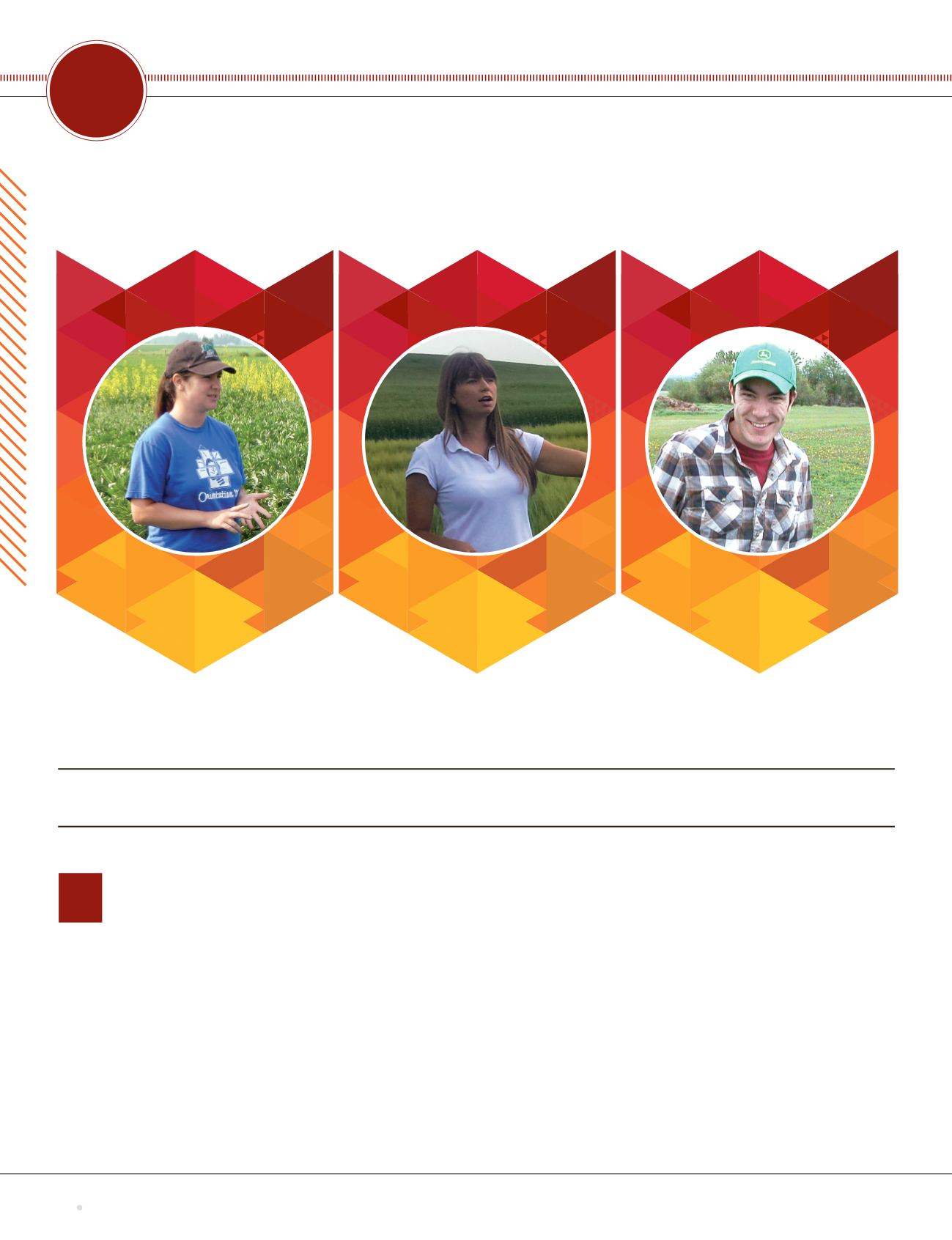

Spring
2017
Grains
West
36
Feature
BY TAMARA LEIGH • PHOTOS COURTESY OF NEIL HARKER, GARSON LAW AND BOYD MORI
N AGRICULTURE, SUCCESSION
planning isn’t just an issue that
affects the farm. As senior
researchers in government and post-
secondary institutions near retirement,
the pressure to recruit the best and
brightest students into agricultural
research is getting higher.
“In tough times, succession planning
is usually one of the first things hit
because it takes time and training,”
said Clair Langlois, cereal extension
specialist with Alberta Agriculture and
Forestry. “In the long term, it’s not
necessarily a wise way of going.”
I
The old guard passes the torch to Canada’s newgeneration of ag researchers
THE FUTURE IS NOW
Langlois has had a long career in
applied agriculture research. Now his job
is to bridge the gap between producers
with questions and the researchers who
can provide answers.
“Young researchers come to
the industry with fresh ideas, fresh
perspectives and new energy,” he said.
“We need to have a constant influx of
them so we can have our research icons
mentor them before they retire.”
Facing complex issues including
climate change, herbicide-resistant
weeds and productivity challenges,
agricultural research is essential when
it comes to helping farmers innovate,
adapt and remain viable into the future.
In some ways, it is the complexity of
these challenges, and a desire to make
a difference in people’s lives, that
make agriculture attractive to the next
generation of researchers.
Breanne Tidemann, Laurel Perrott and
Boyd Mori are three fresh faces in the
field of agriculture research. Their work
and their journeys are different, but they
share a common goal: to find practical
solutions to agriculture’s most pressing
problems in order to move Canada’s
agriculture sector forward.









